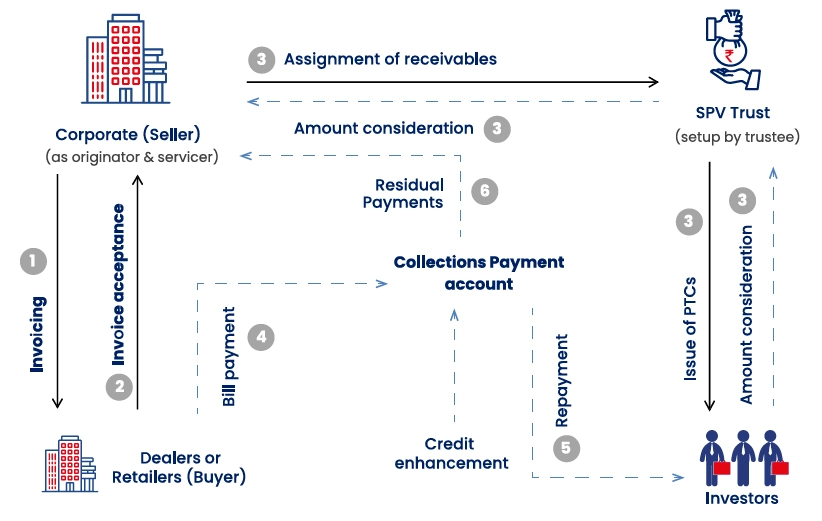Tech and Trends
5 ways CFOs can drive Digital Transformation in their Organizations

In today’s rapidly evolving business landscape, being a digital-first business is no longer a buzzword but a strategic imperative. Interestingly, research suggests, 69% of organizations classify themselves as “digital businesses,” signifying either a well-established digital strategy backed by extensive use of digital technologies across their operations or an ongoing transformation to bolster digital capabilities. The role of CFOs in emerging corporates has become pivotal in driving this change, transforming financial strategies to align with a digital-first approach. The digital imperative is not a one-size-fits-all equation. CFOs will need to consider the unique nuances of their industry’s dynamics. More than just incorporating technology; it’s about understanding how financial decisions can complement the digital transformation growth of the organization and business. while ensuring outcomes like predictable cash flow for CFOs, which are critical for maintaining stability during rapid change.
This article explores how CFOs can mobilize resources better and create value by adopting a digital-first approach in managing business as usual.
1. Have an appetite for constantly improving the Digital Quotient
Traditionally, manual processes and human errors have plagued financial operations. In the era of data abundance, CFOs can seize the opportunity to engage with newer tools, scoring mechanisms, and digital platforms. It starts with dedicating budgets to upskill internal teams for developing a digital-first mindset. This will empower teams to experiment, innovate, and implement new ways of working on the same tasks but, with greater efficiency. For instance, an Indian Multinational that provides Business Consulting, IT, and Outsourcing Services facilitates continuous reskilling in digital technologies. It provides learning paths and certifications, providing employees with industry-standard learning programs to master new and emerging technology skills. Each instance of reskilling is rewarded, enabling employees to immediately apply their acquired skills to projects and gain valuable experience. Adopting a similar approach aligns financial decisions with digitalization strategies and contributes to a more agile and empowered workforce.
2. Integrate ERPs. A stitch in time saves nine!
Integrating ERP with cloud-based platforms like CRM and HRM is vital for digital transformation of businesses, especially since sales and human resources are the engines of organizations. This integration ensures data consistency, streamlines processes, and drives scalability. Connecting legacy systems to CRMs revitalizes old systems, bypassing costly upgrades, enabling the sales force to track every lead and perpetuate meaningful conversations within the pipeline. Aligning with HRM enhances workforce management, enabling efficient tracking of employee performance, resource allocation, and talent acquisition. Finance Teams too can consider integrating with low-code or no-code platforms like Vayana to expedite the journey from onboarding and transactions in B2B Trade.
3. Cover your Compliance Basics for a Resilient Supply Chain
Some mid-sized organizations even today, rely on market hearsay or sales & marketing intel to understand and filter which counterparties in their supply chain are good to do business with or not. Leveraging India’s Digital Public Infrastructure for real-time data to enhance transparency and accountability is a great way to forecast financial performance. By leveraging tools that use structured and unstructured data, AI, Machine Learning, Cloud Computing, and Analytics, finance, procurement, and treasury teams address dynamic risk management challenges in the supply chain. These help prevent fraud by identifying the right channel partners, enabling stronger supply chains.
4. Go to market faster with FinTechs & Third-Party Solutions
Integrating with FinTechs and leveraging their solutions is a great way to optimize output and save costs. CFOs could actively seek partnerships with FinTechs for tailored solutions to streamline AR / AP processes and ensure predictable cash flows for CFOs, which is increasingly vital for efficient financial planning. According to a report published in Nov 2023 by Pymts & Mastercard, more than 60% of firms have already automated at least some AP and AR processes, and the push for automation continues as they anticipate that making payments to suppliers and receiving money from customers will become even more of a core necessity soon. Here’s where smart supply chain finance programs have a role to play. Corporates can enhance cash flow efficiency through options like Payable Financing, Receivable Financing, Discounting, and Factoring. These initiatives optimize cash flow, mitigate risks, and bolster relationships with counterparties. For instance, a major automotive conglomerate faced the challenge of increasing production demands without adequate banking support. By opting for an SCF program, they streamlined vendor onboarding and broadened financing options. Implementing a user-friendly onboarding platform slashed the onboarding time to just one hour. Additionally, tailored financing programs for each supply chain stakeholder greatly enhanced efficiency, resulting in a remarkable 59% utilization rate and tripling of onboarding speed. Hence, partnerships with FinTechs saves costs and expedites the journey from vendor onboarding to life cycle value, making B2B Trade more efficient.
Monitoring and measuring volatility, especially in cross-border trade, is crucial. CFOs can make informed decisions and adapt accordingly by leveraging advanced analytics and machine learning algorithms to identify subtle market shifts and anticipate potential disruptions. By harnessing real-time data feeds and sentiment analysis tools, CFOs can gain deeper insights into market dynamics and geopolitical events. Furthermore, adopting scenario planning techniques allows CFOs to simulate various scenarios and assess their potential impact on financial performance. For instance, consider an MSME that imports ovens from Italy and sells them to the hospitality sector. In the event of disruptions like drone attacks in the Red Sea, not only does the MSME company face challenges but also impacts other associated entities in the supply chain. Its large HORECA client reliant on these ovens, experiences delays in operations, leading to potential revenue losses or decreased customer satisfaction. This ripple effect underscores the importance of monitoring and measuring volatility so that corporates and counterparties are better prepared to tackle disruptions. Experimenting in such times provides a strategic advantage to maneuver uncertain environments.
5. Experiment in the VUCA world to anticipate future trends
In conclusion, the path to a digital-first by organization is an ongoing journey. It demands agility and proactive strategies leveraging digital transformation from CFOs. By integrating digital tools and strategies into their financial management processes, and effective change management, CFOs can steer their organizations towards better efficiency, and resilience.







